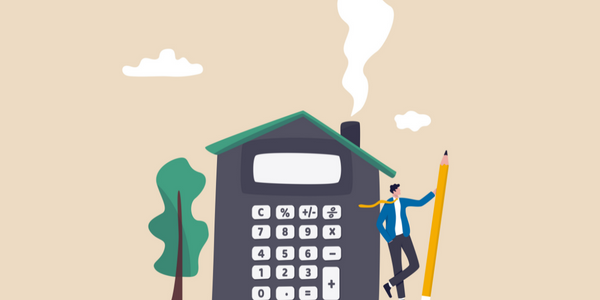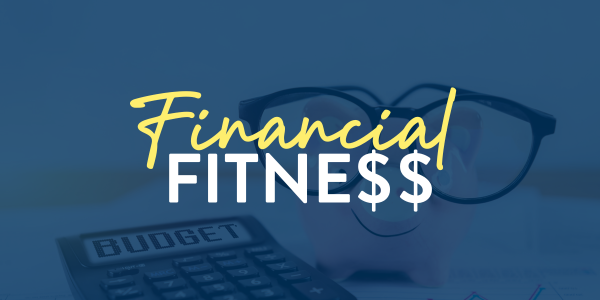
Before you go too far down the house-hunting rabbit hole, you’ll want to ensure that you meet the credit score requirements to secure a mortgage loan. After all, this mortgage loan will allow you to purchase your dream home. And while many factors go into qualifying, a good credit score is definitely one of them.

We know that getting “rated” can make you feel like you’re back in school. Like in school, however, with a little hard work, discipline, and dedication, you can improve your credit scores quickly!
So let’s jump right in, starting with the obvious.
What Is a Credit Score?
Credit scores range from 300 to 850. The Fair Isaac Corporation, also known as FICO, originally created this scale to help lenders and investors determine the creditworthiness of consumers.
A higher credit score indicates that you’re a lower-risk borrower, which could lead to a lower mortgage rate over the life of the loan. That’s because a good credit score and a strong credit report imply that you can manage your credit wisely and make timely payments. Lenders are more likely to offer you a lower interest rate mortgage loan if you are a high-credit-score (low-risk) borrower.
Other agencies have adopted a similar scale and are expected to start playing a bigger role in credit scoring in the coming years. At the end of the day, your credit score is a tool that provides a snapshot of your credit history to lenders, essentially summarizing the risk of lending to you.
What Determines Your Credit Score?
Five factors help calculate your credit score. Here’s an overview of these elements of the credit scoring model.
1. Payment history (35% of your overall score)
Paying your credit accounts on time—including credit cards, auto loans, student loans, medical bills, and any personal loans—can increase your credit score. In the same vein, late payments can negatively impact your credit score.
The credit scoring model considers the frequency and severity of these late payments. A 90-day late payment, for example, will have a larger negative impact on your credit score than a payment that’s 30 days late. Ultimately, you want to do what you can to pay your bills on time to ensure that you don’t make bad credit worse or reverse all the work you’ve done to improve your credit score.
2. Utilization rate (30% of your score)
The ratio of your credit account balances to your available credit limit is known as the utilization rate. The credit bureaus consider the utilization rate of your individual cards, as well as your overall cumulative credit limits, in this factor. A balance-to-credit-limit ratio below 30% may improve your credit scores, while a ratio above 30% may lead to bad credit.
3. Length of history (15% of your score)
The age of your credit accounts matters. What we mean is that it pays to establish a long history of credit usage and on-time payments. Credit accounts that have been open and utilized for years can improve your credit score.
Many people use their credit cards for their monthly expenses, which earns them perks and helps establish their reputation as responsible borrowers. This is a good idea only if you know you can pay your balance off every month.
With this in mind, you might think that it makes sense to open a bunch of new credit accounts, just as long as you pay off the balance at the end of the month. But opening new credit accounts actually lowers the length of your credit history.
This can result in a lower credit score in the first 12 months. Once an account reaches 24 months or longer, however, it becomes a more established account. That’s when you can expect to see a positive impact.
This is also why a mortgage lender may tell potential homebuyers not to open new lines of credit when they’re preparing to buy a house. It can lower your credit score and potentially affect your debt-to-income (DTI) ratio.
4. Type of credit (10% of your score)
Also known as credit mix, credit scoring models consider what type of credit you have. Generally speaking, a mix of different credit types is more favorable than only one type of credit. Various types of credit may include a revolving credit card, an auto loan, and an installment loan, for example. This mix of credit types can produce a higher score than using revolving credit cards.
5. Inquiries (10% of your score)
When a lender pulls your credit, it is considered a “hard” inquiry. That can have a negative impact on your credit score. That means you could be dinging your score every time you apply for a new credit card or loan.
Not all inquiries negatively impact your credit, though. Pre-approval and employer inquiries that check your credit aren’t detrimental and don’t trigger calls and letters from other parties trying to sell you their latest and greatest credit card. Multiple inquiries from mortgage companies made within a 45-day window will ding your credit score only once, allowing consumers to do their research without lowering their credit score.
Of course, not all inquiries negatively impact your credit. “Soft” inquiries, such as a potential employer checking your credit, aren’t detrimental. Multiple inquiries on a single new account, such as multiple credit checks for your mortgage, ding your credit score only once, as long as these checks are all made within 45 days of one another.
What if you want to check your credit scores yourself? Any request regarding your personal credit is considered a soft inquiry and won’t count against you.
What Are the Credit Score Requirements to Buy a House?
Every mortgage lender is different. No magical number will suddenly unlock a home loan, but there are credit score ranges that lenders generally view more favorably than others.
Credit scores are typically viewed this way:
- 800–850: Excellent
- 700–799: Very good
- 680–699: Good
- 620–679: Fair
- 580–619: Poor
- 500–579: Bad
- 499 and lower: Very bad
A higher credit score can lead to a more favorable home loan interest rate. However, it’s important to note that the credit score is just one part of the equation, and other factors such as income and DTI ratio also play a role in home loan qualification.
Each mortgage lender has its own strategy, including the level of risk they find acceptable for a given credit product. So remember that there’s no standard “cut-off score” used by all lenders. Instead, these general ranges can tell them whether a potential borrower has a good or bad credit score or somewhere in the middle.
Don’t forget: When it comes to qualifying for a loan, your credit score is only one part of the equation. A borrower can have a perfect 850 score, but if their income and DTI ratio don’t support the loan amount they’re requesting—say they make $30,000 a year and are looking at homes in the $800,000 range with no other liquid assets—their desired amount can still be denied.
How Do You Check Your Credit Score?
You can request a free copy of your credit report once a year from each of the three credit bureaus: TransWestern, Experian, and Equifax. You can contact these bureaus directly or go to Annual Credit Report to get all three.
This is a solid strategy if you’re looking to get a mortgage loan in the next three months. If you have some time and want to improve your credit, you can always request one report from each credit bureau every four months to track your progress.
Once your credit report is in hand, review it for accuracy. Call the credit bureaus if you find any errors or if you have questions about anything in the report.
How Do You Improve Your Credit Score?
If you find that your credit needs some work, remember the five factors determining your score and then set about optimizing your credit.
The most effective ways to do this:
- Make payments on time every time.
- Pay credit cards down to 30% or less of their credit limits.
- Limit the number of accounts you apply for at one time.
- Leave established, older accounts open even if they’re paid off.
Keep in mind, too, that you might be able to qualify for a mortgage loan even if your credit score is in the “poor” to “fair” range. That’s because credit is not the only factor considered.
APM’s specialty programs can help individuals who have previously had a short sale, pre-foreclosure, or foreclosure reenter the housing market. There is no need to count yourself out of the market just because your credit score is less than perfect.
If you have questions about your credit or want to learn more about the homebuying process, click here to connect with an APM Loan Advisor in your area.








